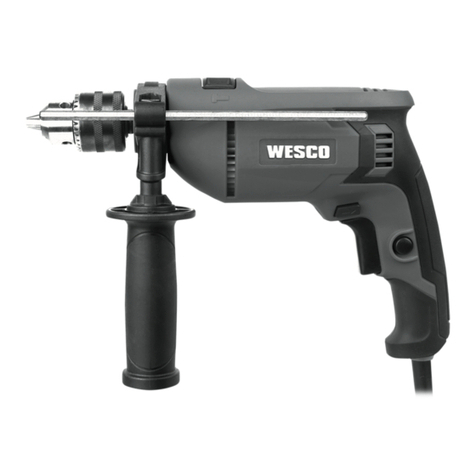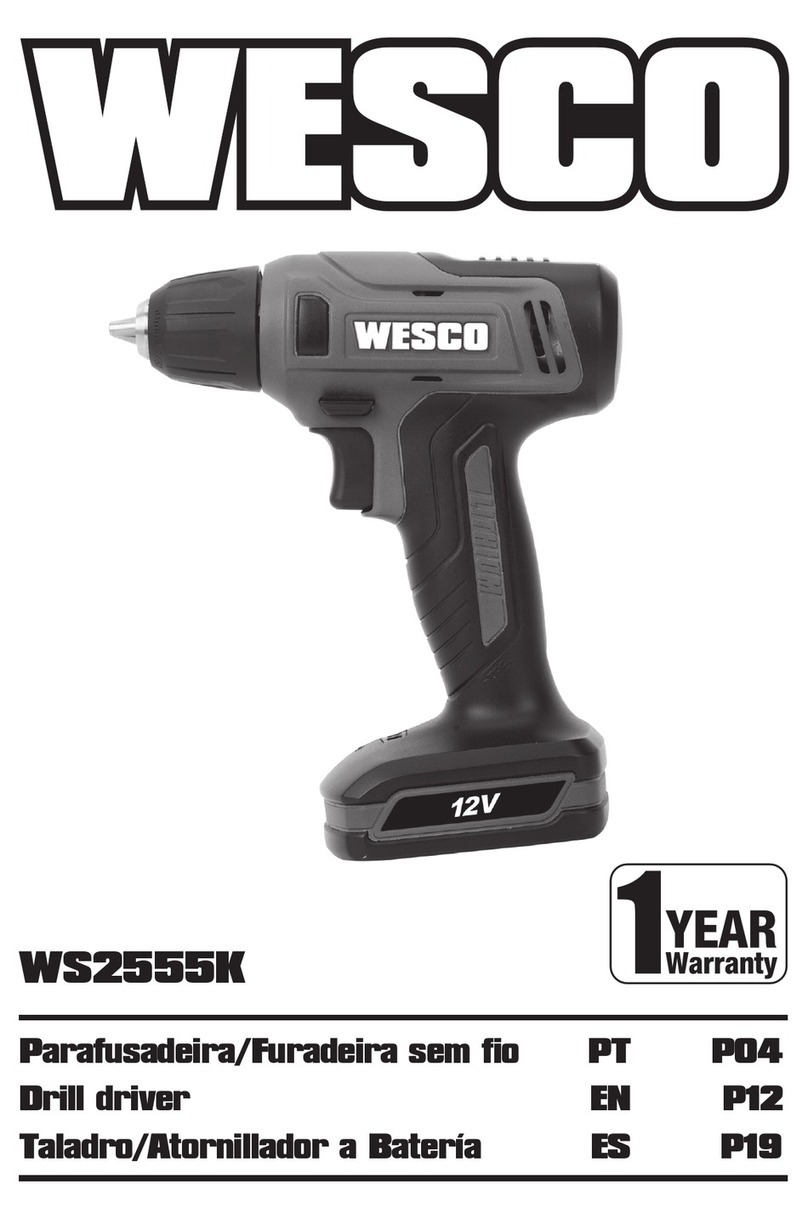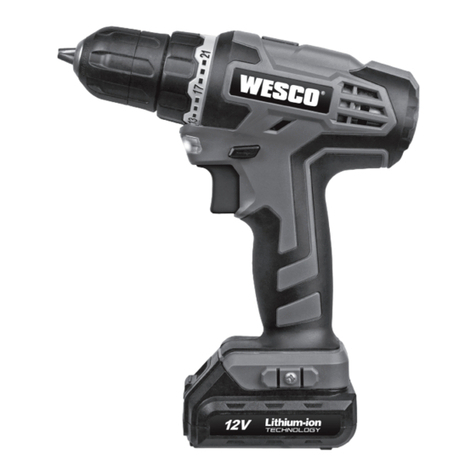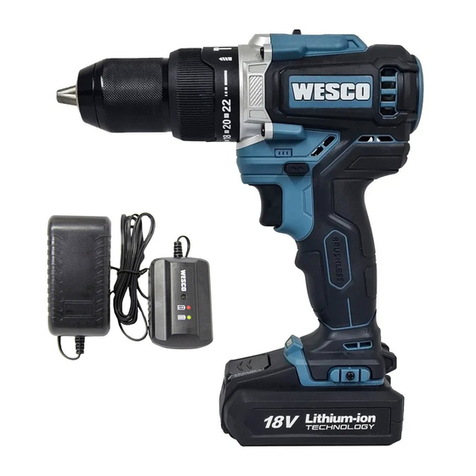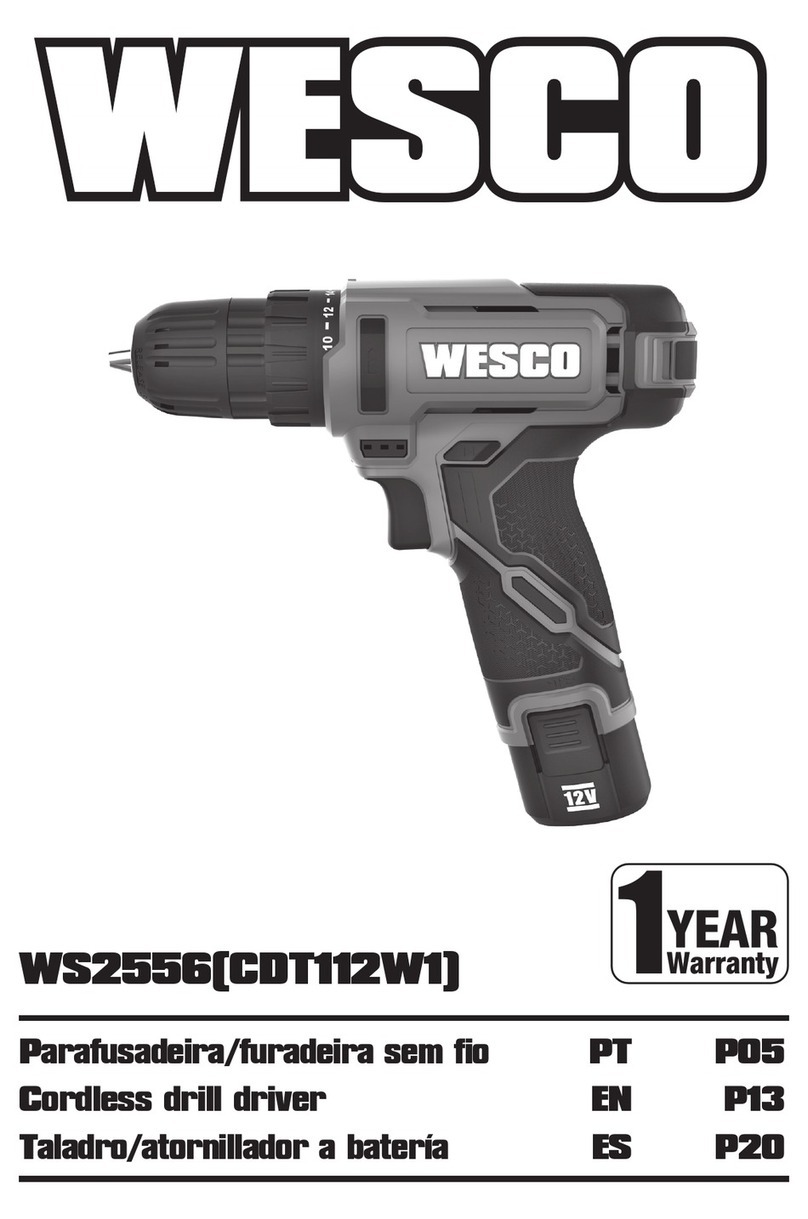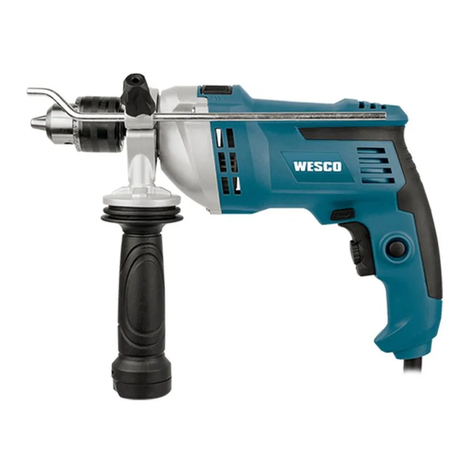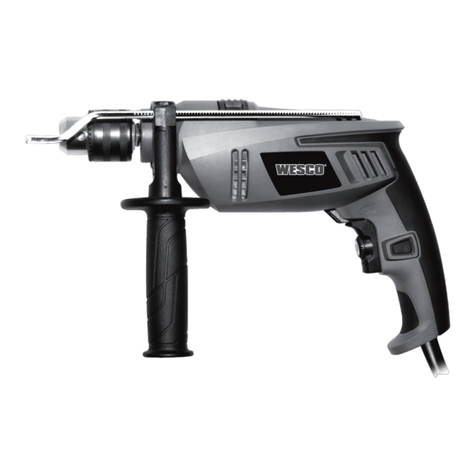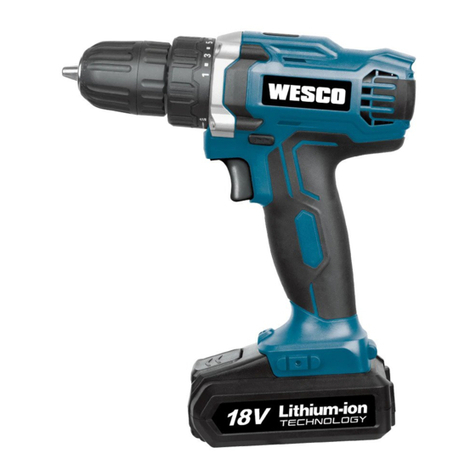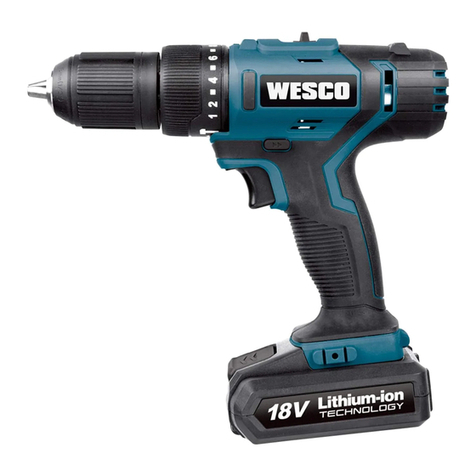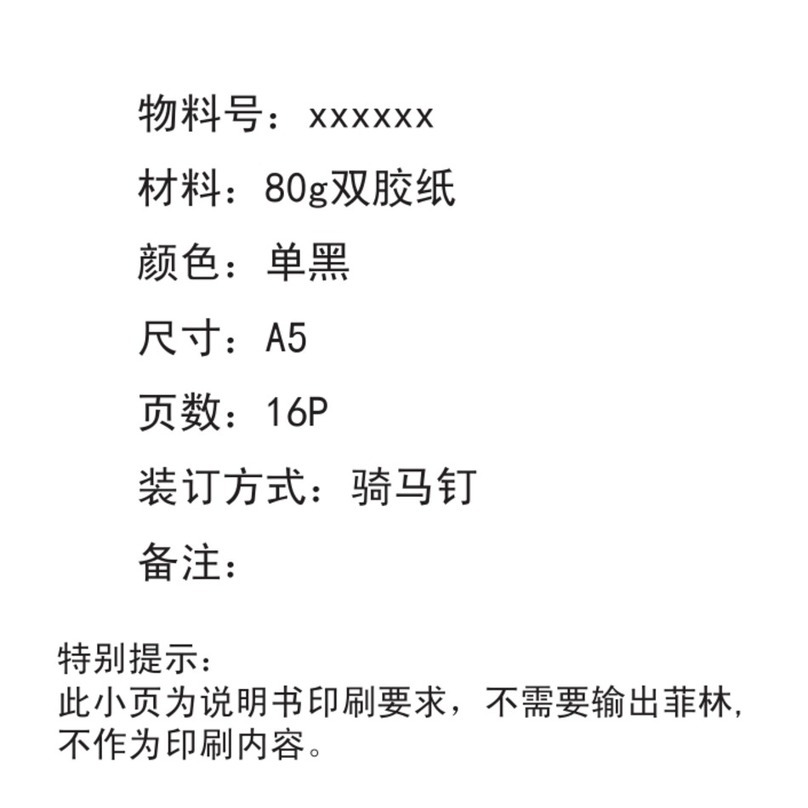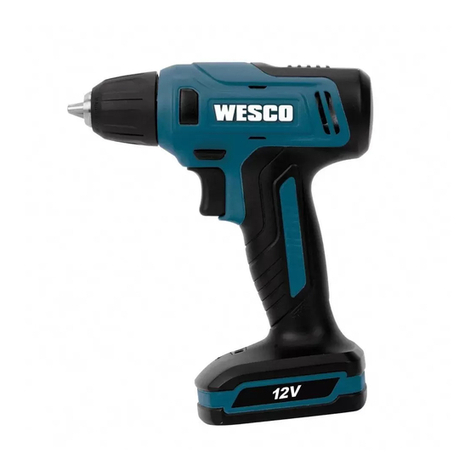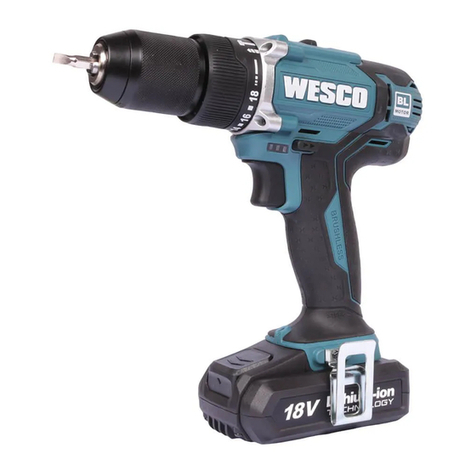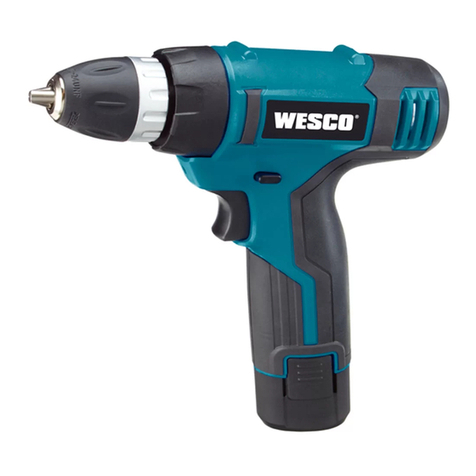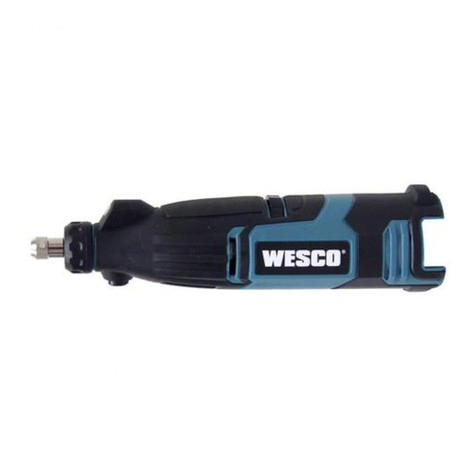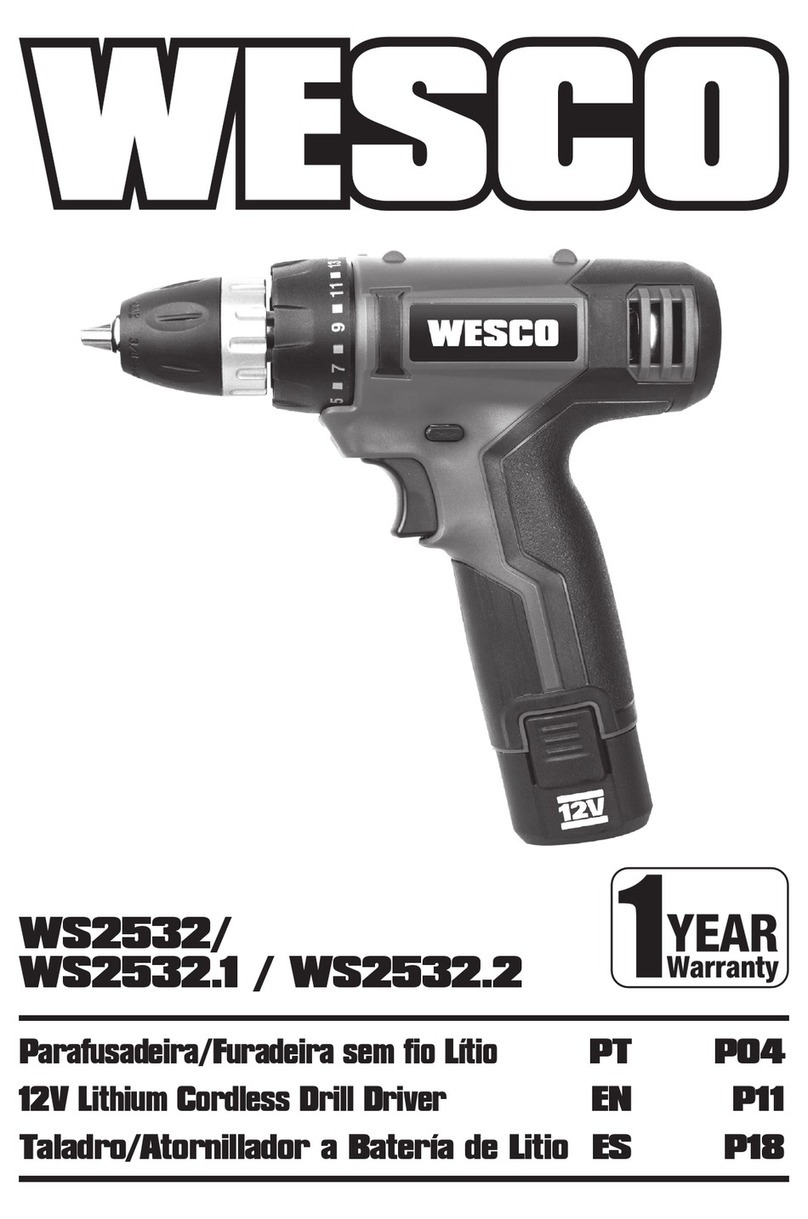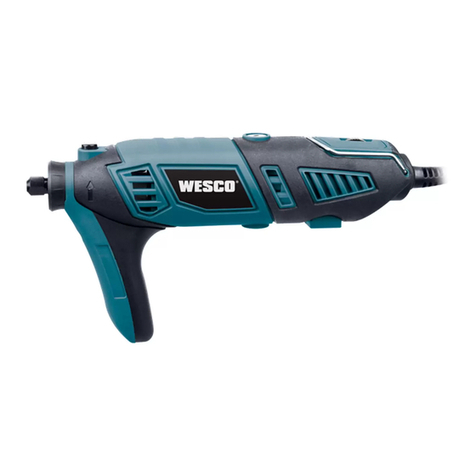
7
PT
SEGURANÇA DO
PRODUTO AVISOS
GERAIS DE SEGURANÇA
DE FERRAMENTAS
ELÉTRICAS
ATENÇÃO! Leia e compreenda todas as
instruções de funcionamento, segurança, e
ilustrações inclusas no manual dessa ferramenta
elétrica.
A não observância destas instruções pode causar choque
elétrico, incêndio e/ou lesões graves.
Guarde estas instruções para referência futura.
Os termos “ferramenta elétrica” utilizados em todos os avisos constantes
destas instruções referem-se à sua ferramenta elétrica acionada por
corrente elétrica (com cabo de alimentação) ou ferramenta elétrica
acionada por bateria (sem cabo de alimentação).
1) LOCAL DE TRABALHO
a) Mantenha o local de trabalho limpo e bem
arrumado.
Áreas com pouca iluminação e desordenadas
podem provocar acidentes.
b) Não utilize o aparelho em locais onde existam
líquidos, gases ou poeiras inflamáveis e onde
exista o risco de explosão.
As ferramentas elétricas
produzem faíscas que podem inflamar poeiras ou gases.
c) Mantenha as pessoas e particularmente as
crianças afastadas da ferramenta elétrica durante
o seu funcionamento.
Qualquer distração pode fazê-lo
perder o controle da ferramenta.
2) SEGURANÇA ELÉTRICA
a) O Plugue da ferramentas elétricas deve encaixar
bem na tomada de alimentação. Nunca modifique
plugues, seja de que maneira for. Não utilize
nenhuma adaptação com ferramentas elétricas
que tenham ligação à terra.
Plugues e cabos não
devem ser modificadas e tomadas de corrente adequadas
reduzem o risco de choque elétrico.
b) Evite o contato do corpo com superfícies ligadas
à terra como tubos, aquecedores, fogões e
frigoríficos.
Existe um aumento do risco de choque elétrico
se o seu corpo estiver em contato com a terra.
c) Não exponha este equipamento à chuva ou
humidade.
A infiltração de água num aparelho elétrico
aumenta o risco de choque elétrico.
d) Utilize corretamente o cabo de alimentação. Nunca
utilize o cabo para transportar, puxar ou desligar
o aparelho da tomada de corrente. Mantenha o
cabo afastado de fontes de calor, óleos, arestas
afiadas ou peças em movimento.
Cabos danificados ou
modificados aumentam o risco de choque elétrico.
e) Quando trabalhar com uma ferramenta elétrica ao
ar livre, use um cabo de extensão adequado para
utilização no exterior.
A utilização de um cabo adequado
para uso exterior reduz o risco de choque elétrico.
f) Se não puder evitar a utilização de uma
ferramenta elétrica num local úmido, utilize uma
fonte de alimentação protegida contra corrente
residual.
A utilização de um dispositivo com proteção
contra corrente residual reduz o risco de choque elétrico.
3) SEGURANÇA DE PESSOAS
a) Esteja atento, observe o que está fazendo e
seja prudente sempre que trabalhar com uma
ferramenta elétrica. Não utilize nunca uma
ferramenta elétrica quando estiver cansado
ou sob a influência de drogas, álcool ou
medicamentos.
Um momento de desatenção quando se
utiliza uma ferramenta elétrica pode causar lesões graves.
b) Utilize equipamentos de segurança. Use sempre
óculos de proteção.
Equipamentos de segurança, tais
como máscaras protetoras, sapatos de sola antiderrapante,
capacetes ou proteções auriculares devidamente utilizados
reduzem o risco de lesões.
c) Evite o arranque acidental da ferramenta.
Certifique-se de que o comutador de alimentação
está desligado antes de ligar a ferramenta à fonte
de alimentação e/ou à bateria, antes de pega-
la ou antes de a transportar.
Se mantiver o dedo no
interruptor ou acionar o aparelho enquanto este estiver ligado
podem ocorrer acidentes.
d) Remova quaisquer chaves de ajuste ou de porcas
antes de ligar a ferramenta elétrica
. Chaves de
porcas ou de ajuste fixadas a peças móveis da ferramenta
podem causar lesões.
e) Não exceda as suas próprias capacidades
.
Mantenha sempre o corpo em posição firme e de equilíbrio,
o que lhe permite controlar melhor a ferramenta elétrica em
situações imprevistas.
f) Mantenha o cabelo, vestuário e luvas afastados
de peças em movimento. Mantenha o cabelo,
vestuário longe de peças em movimento.
Tecidos
soltos, joias e cabelo comprido podem se prender em peças
em movimento.
g) Se forem fornecidos dispositivos para a
montagem de unidades de extração ou recolha
de resíduos, Assegure-se de que são montados
e utilizados adequadamente.
A utilização destes
dispositivos pode reduzir os perigos relacionados com a
presença de resíduos.
h) A familiaridade e uso frequente da ferramenta não
exclui a atenção aos princípios de segurança.
A
falta de cautela pode causar fraturas serias em uma questão
de segundos
4) UTILIZAÇÃO E MANUTENÇÃO DA FERRAMENTA
ELÉTRICA
a) Não force a ferramenta. Utilize a ferramenta
elétrica apropriada para cada aplicação.
A utilização
da ferramenta elétrica apropriada executa o trabalho de
forma melhor e mais segura, à velocidade para a qual foi
concebida.
b) Não force a ferramenta. Utilize a ferramenta
elétrica apropriada para cada aplicação.
A utilização
da ferramenta elétrica apropriada executa o trabalho de
forma melhor e mais segura, à velocidade para a qual foi
concebida.
c) Desconectar a ferramenta da fonte de energia
e/ou remover a bateria antes de fazer ajustes,
trocar acessórios, ou ao armazenar a ferramenta.
Estas medidas de segurança preventivas reduzem o risco de
acidentes com a ferramenta.
d) Quando não estiver usando a ferramenta elétrica,
guarde-a fora do alcance das crianças e não
deixe que esta seja utilizada por pessoas que não
a conheçam, nem tenham lido as instruções.
As
